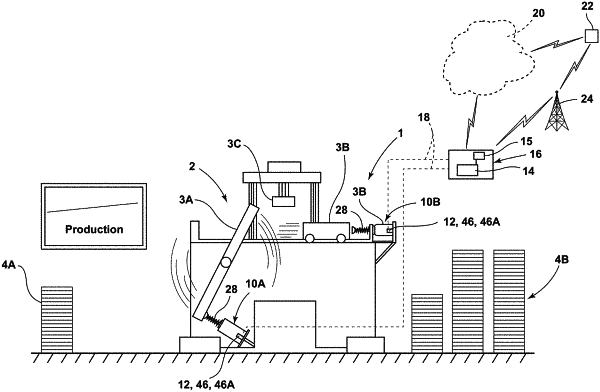| CPC G05B 23/0283 (2013.01) [F16F 9/3292 (2013.01); G06N 20/00 (2019.01)] | 24 Claims |

|
1. An industrial shock absorber system, comprising:
an industrial shock absorber having a body and a force-receiving member movably connected to the body whereby a force applied to the force-receiving member causes movement of the force-receiving member relative to the body from an extended position to a retracted position causing movement of a working fluid whereby the working fluid resists movement of the force-receiving member as the force-receiving member moves from the extended position to a retracted position when a force is applied to the force-receiving member;
a resilient member biasing the force-receiving member towards the extended position such that the force-receiving member returns to the extended position from the retracted position if a force applied to the force-receiving member is released to define a Rod Return Time (RRT);
a sensor configured to generate measured sensor data corresponding to at least one of a pressure of the working fluid, a temperature of the working fluid, and rod position data corresponding to a position of the force-receiving member relative to the body; and
at least one computing device operably coupled to the sensor, wherein the computing device is configured to determine at least one of Time-Through-Stroke (TTS) and RRT based on the sensor data and to compare measured TTS and/or measured RRT to expected and/or historical TTS and/or RRT data to detect and/or predict failure of the industrial shock absorber.
|